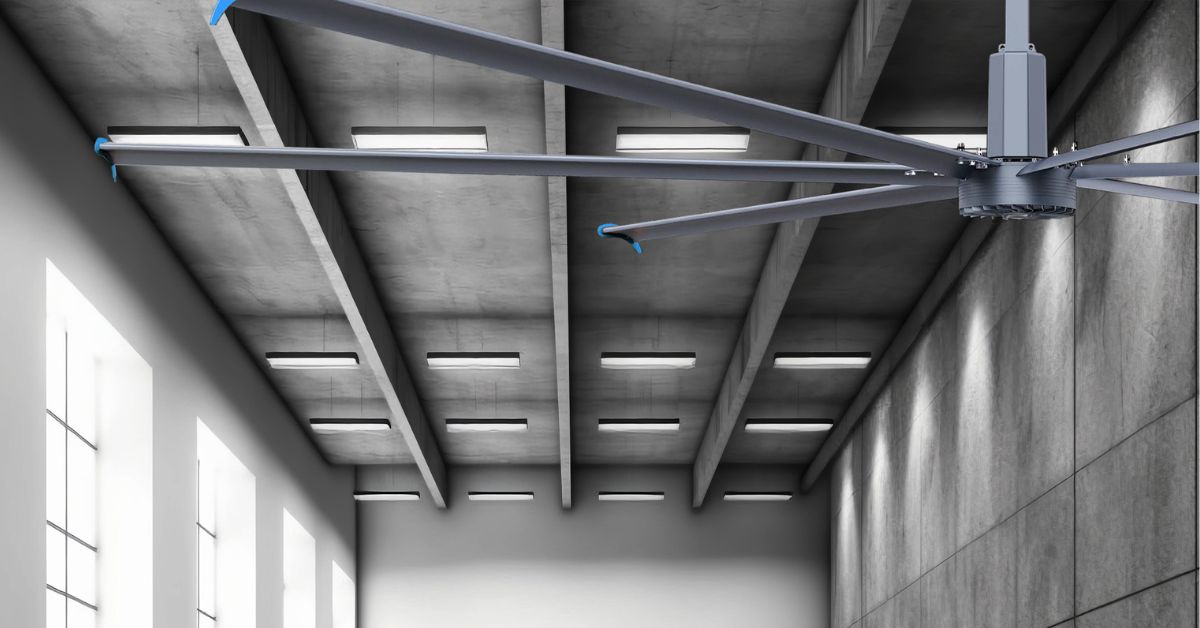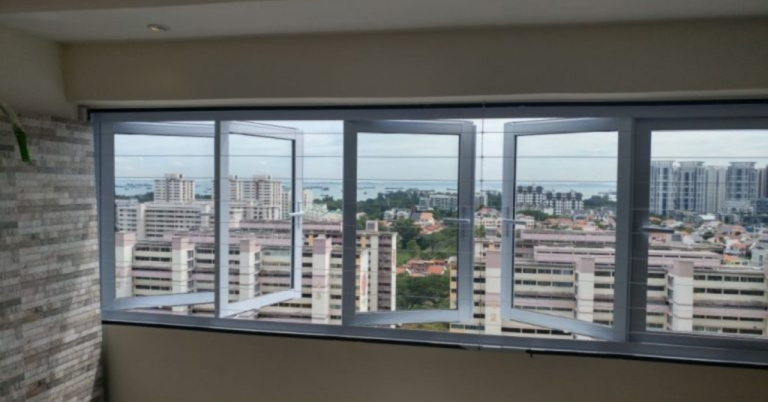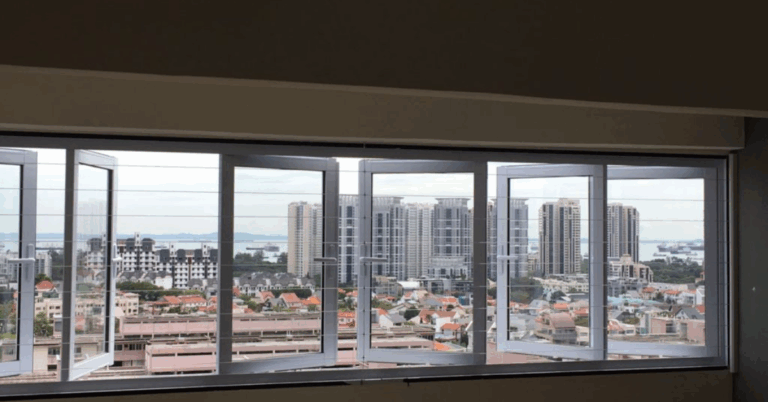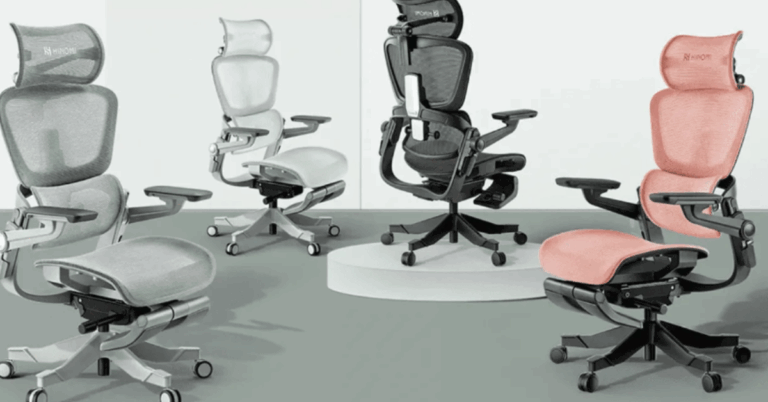Optimising Airflow & Comfort: The Role of the Commercial Ceiling Fan in Modern Business Spaces
In today’s era of energy-conscious design and heightened expectations for comfort, the Commercial Ceiling Fan has become a vital component in many business environments. These are no mere decorative fixtures they’re engineered tools designed to enhance airflow, reduce cooling costs, and deliver a more pleasant experience to employees, customers, and visitors. Whether deployed in factories, warehouses, retail stores, gyms, or restaurants, commercial ceiling fans help bridge the gap between traditional ventilation systems and full-scale climate control offering a balance of efficiency, performance, and style.
Why Businesses Choose Commercial Ceiling Fans
1. Energy Efficiency & Cost Savings
One of the strongest selling points of commercial ceiling fans is their ability to circulate air effectively while consuming relatively little electricity. In many commercial settings, instead of solely relying on air conditioning, businesses can supplement or reduce air-conditioning loads by using ceiling fans to maintain the comfortable “air movement” effect. This decreases cooling costs, especially in large volume spaces where cooling every cubic meter uniformly is impractical.
2. Improved Air Distribution
In large or high-ceiling spaces, uneven temperature zones are a common issue—hot air rising, corners remaining stagnant, and areas near vents feeling too cold or too warm. A commercial ceiling fan helps to “mix” air layers, distributing the conditioned air more evenly and eliminating dead zones, thereby enhancing overall occupant comfort.
3. Versatility Across Environments
Commercial-grade ceiling fans come in many forms: high-volume, low-speed (HVLS) fans for factory floors; compact yet powerful models for retail or hospitality use; industrial fans suited for warehouses; and even outdoor-rated units for patios or atriums. These fans are designed to withstand rigorous use, resist dust and moisture, and often come with features such as speed control, quiet motors, and safety mechanisms.
4. Enhancing Comfort & Productivity
Comfortable air movement can alleviate stuffiness in large indoor spaces, making environments more conducive to work, shopping, or socializing. In workplaces especially, better comfort can translate into higher productivity, fewer complaints about temperature, and reduced reliance on window or desk fans.
5. Low Maintenance & Longevity
High-quality commercial ceiling fans are built for durability—they typically feature robust motors, corrosion-resistant blades, and well-sealed bearings. This reduces maintenance costs and the risk of downtime or failure, especially compared to many portable cooling solutions.
Key Types of Commercial Ceiling Fans
When selecting a commercial ceiling fan, one must consider the type of space, ceiling height, airflow needs, and environmental conditions. Here are some common types:
-
HVLS (High Volume, Low Speed) Fans: These are large-diameter fans (often 2–7 meters) designed to move a high volume of air at low speeds. Ideal for factories, warehouses, gymnasiums, and expansive retail spaces.
-
Industrial Ceiling Fans: Rugged units built to handle dusty, high-traffic, or harsh environments. These are well-suited for utility areas, heavy manufacturing, and large open workshops.
-
Compact Commercial Fans: More modest in size, these are suitable for offices, boutiques, restaurants, and shops. They provide good airflow without overwhelming the interior or clashing with aesthetics.
-
Outdoor-Rated Ceiling Fans: Built to resist moisture, humidity, and environmental exposure—perfect for covered outdoor seating areas, patios, atriums, or semi-open spaces.
Design & Specification Considerations
To derive the full benefit from a commercial ceiling fan, attention must be paid to certain design and operational parameters.
1. Fan Diameter & Blade Length
The diameter must align with the ceiling height and the area’s breadth. A fan that’s too small won’t move adequate air; one that’s too large risks inefficiencies, noise, or structural issues.
2. Motor Power and Efficiency
Commercial fans often incorporate efficient motors (e.g., brushless DC, electronically commutated motors) that deliver high torque while minimizing energy use. Efficiency ratings, motor life, and thermal protection should factor into your choice.
3. Mounting Height & Clearance
Proper clearance from the ceiling and the floor is essential for optimal airflow and safety. High ceilings may require extended downrods; low ceilings may mandate smaller units or flush-mount designs.
4. Speed Controls & Automation
Variable speed control (from low to high) allows fine-tuning of airflow according to occupancy, temperature, or time of day. Integrating fans with building automation systems (BAS) or thermostats enhances responsiveness and energy savings.
5. Noise & Vibration
Even in large spaces, excessive noise or vibration can create discomfort or distract occupants. Quality commercial ceiling fans include dampening, balancing, and smooth-running motors to keep operations quiet.
6. Durability & Safety Features
Look for corrosion-resistant components, sealed bearings, anti-detachment mechanisms, and overload protection. In humid or outdoor settings, waterproofing or ingress protection ratings are critical.
Real-World Applications & Use Cases
Warehouses & Manufacturing Facilities
In such large, open, and high-ceiling environments, ventilation challenges are amplified. HVLS fans are especially effective here—moving sufficient airflow to reduce stratification and assist cooling at ground level while lowering the trimmed load on HVAC systems.
Retail & Hospitality
In shopping malls, restaurants, or cafés, aesthetics matter almost as much as performance. Commercial ceiling fans in these spaces strike a balance: they must provide effective air circulation discreetly, operate quietly, and complement the surroundings.
Offices & Conference Halls
Even in enclosed interior spaces, ceiling fans can help reduce reliance on mechanical cooling. In conference rooms or open-office layouts, ceiling fans assist in maintaining comfort when systems are temporarily turned off or in energy-saving modes.
Gyms, Sports Halls & Recreation Spaces
High ceilings and large occupancy swings make these venues ideal for commercial ceiling fans. Reliable air movement helps athletes and visitors stay cooler and more comfortable during physical activity.
Covered Outdoor Spaces
Patios, verandas, and outdoor dining areas often need airflow to counter ambient heat. Outdoor-rated commercial ceiling fans meet this need while withstanding humidity, rain, and temperature fluctuations.
Implementation Best Practices & Tips
-
Site Assessment & Airflow Modeling
Before installation, conduct a site survey, measure ceiling height, floor area, and assess obstacles (beams, ducting). Use airflow modeling or consult with specialists to select an appropriate fan layout. -
Balanced Placement
Position fans such that airflow patterns overlap sufficiently without causing dead zones or buffeting. Avoid placing fans too close to walls or obstructions. -
Zonal Control & Staging
In large complexes, divide spaces into zones. Operate fans only where needed rather than in all zones at full power—this increases efficiency. -
Integration with HVAC & Controls
Synchronize fans with thermostats or building automation systems so fans kick in when cooling demand rises or preemptively circulate air during off-peak hours. -
Regular Maintenance
Periodically clean blades, check for balance, inspect mountings, verify electrical connections, and lubricate any accessible parts. Preventive maintenance helps avoid failures and extends lifespan. -
Monitoring & Feedback
Incorporate sensors (temperature, occupancy) to dynamically adjust fan behavior. Gather feedback from users and modify settings accordingly.
Benefits Recap & Business Impact
A well-thought-out deployment of commercial ceiling fans brings tangible value:
-
Reduced Cooling Bills: Less reliance on AC leads to lower energy usage and operational expense.
-
Improved Comfort: Consistent, gentle airflow reduces hot spots and enhances occupant satisfaction.
-
Extended HVAC Life: Complementary airflow reduces stress on HVAC equipment, possibly extending its service life.
-
Scalability & Flexibility: Fans can be added, repositioned, or controlled dynamically as business needs evolve.
-
Enhanced ROI: Initial investment is recouped via energy savings and reduced maintenance over time.
Conclusion
Commercial ceiling fans are no longer just supplementary units—they’re integral elements of modern building climate strategies. When properly selected, installed, and managed, they can transform large and challenging spaces by delivering comfort, efficiency, and operational resilience. Whether your goal is to optimize energy usage, augment HVAC systems, or create a more pleasant environment for occupants, the right commercial ceiling fan solution can be a powerful asset.
If you’re considering upgrading your facility’s airflow or want help in choosing the ideal design, a professional assessment is the first step. With the right approach, a commercial ceiling fan becomes more than a fixture—it becomes a pivotal component in your business’s comfort and efficiency strategy.







